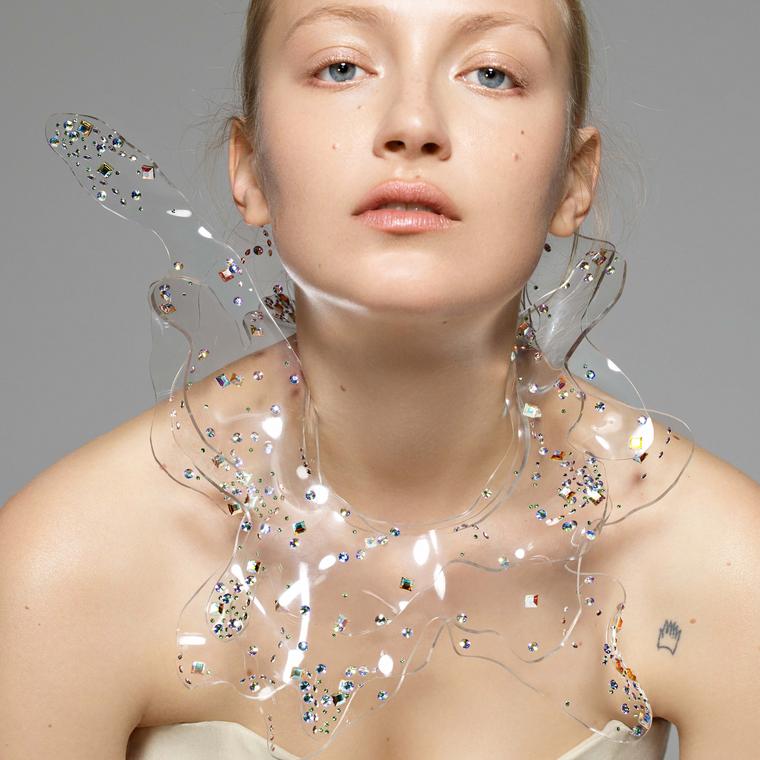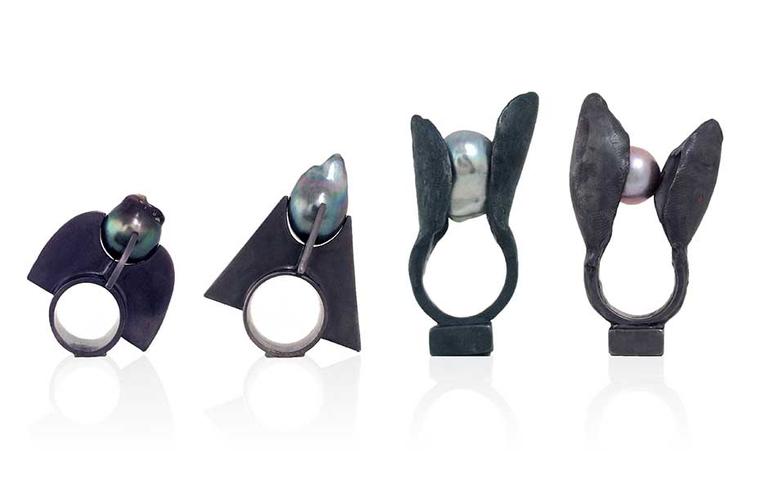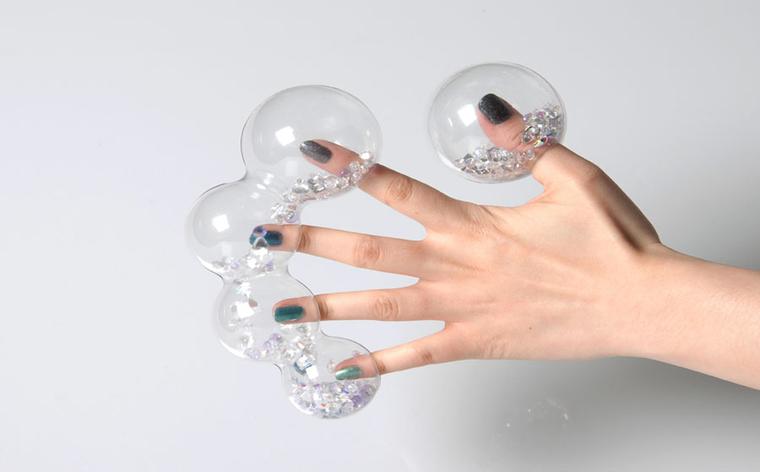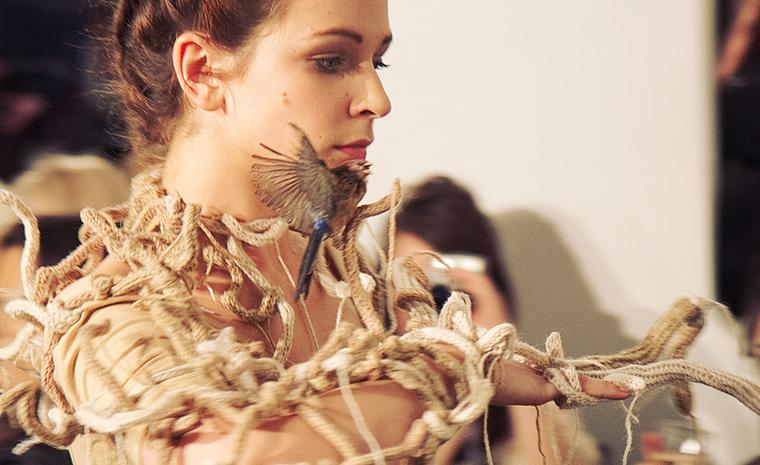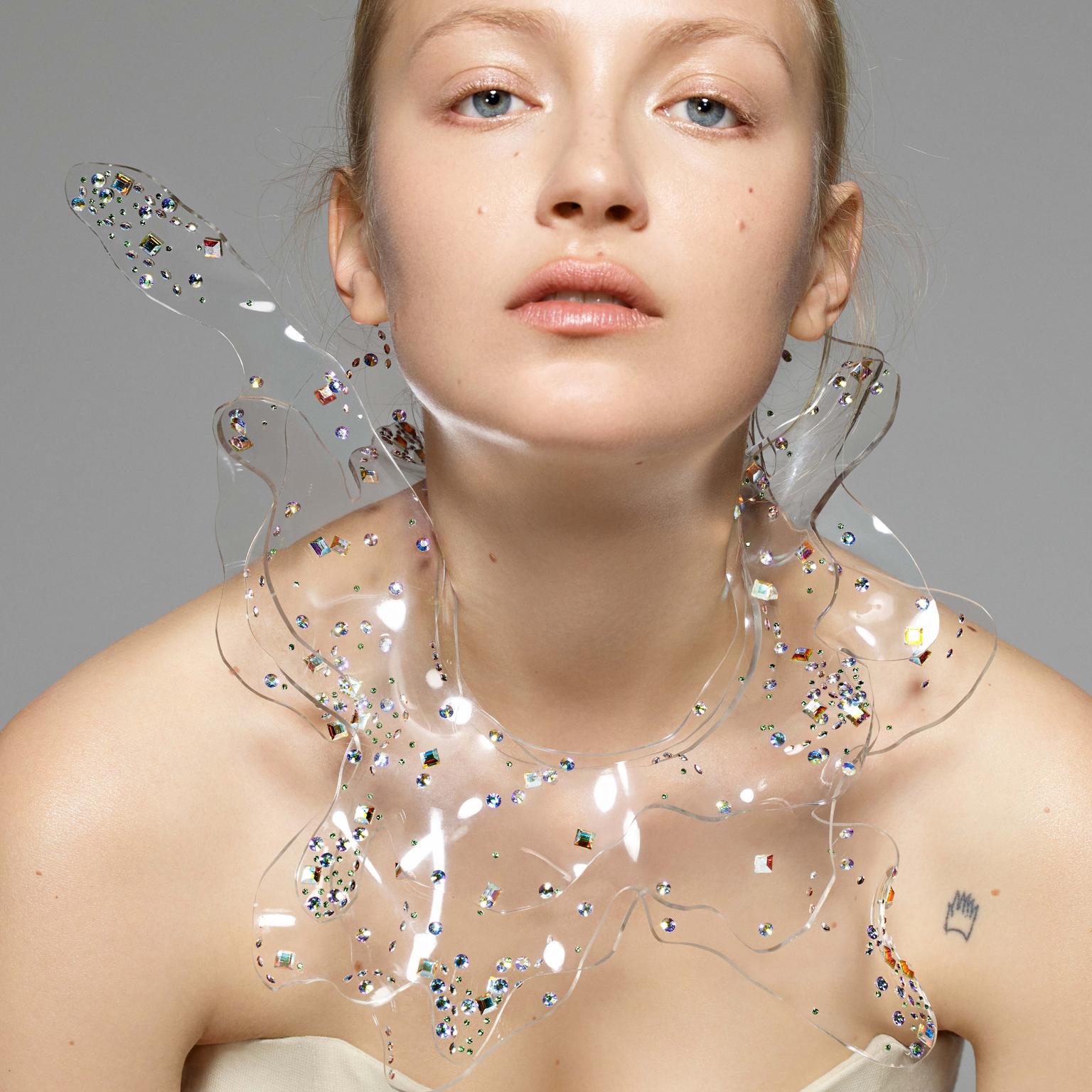
For the past 17 years Swarovski has sponsored a competition for the first year Jewellery Design students at London’s Central Saint Martins. In the words of Nadja Swarovski, Member of the Swarovski Executive Board: ‘the competition was established to encourage innovation and support the next generation of design talent by nurturing creative education.’ And there was no lack of innovation or creativity in the exotic line-up of concepts I saw from the privileged view of a judge. From face jewels to handbag hats, sun visors, perfume infused gloves and feather finger rings, the students at Central Saint Martins pulled out the stops.
This year the theme was linked to the V&A Exhibition ‘Christian Dior: Designer of Dreams’. Swarovski has long history of collaborating with Dior that started when Manfred, grandson of the founder of the Austrian firm, created the Aurora Borealis crystals for Mr. Christian Dior in 1956 The AB as insiders know it, is an iridescent crystal with a vaporised blue metal treatment that shimmers with the mysterious allure of the Northern Lights. The AB crystal has appeared in Dior couture creations ever since and is at the heart of this design competition.
The 32 students visited the blockbuster exhibition at the V&A and then set out to capture the essence of Dior’s design legacy incorporating the AB crystal. The range of inspirations was eclectic ranging from small details to overarching themes and even the invisible. The judges were challenged to narrow down the first selection to a group of ten finalists. These ten students showed not only originality and innovative use of materials but the ability to express a concept both visually and verbally as well as convince the judges that they could actually complete the piece.
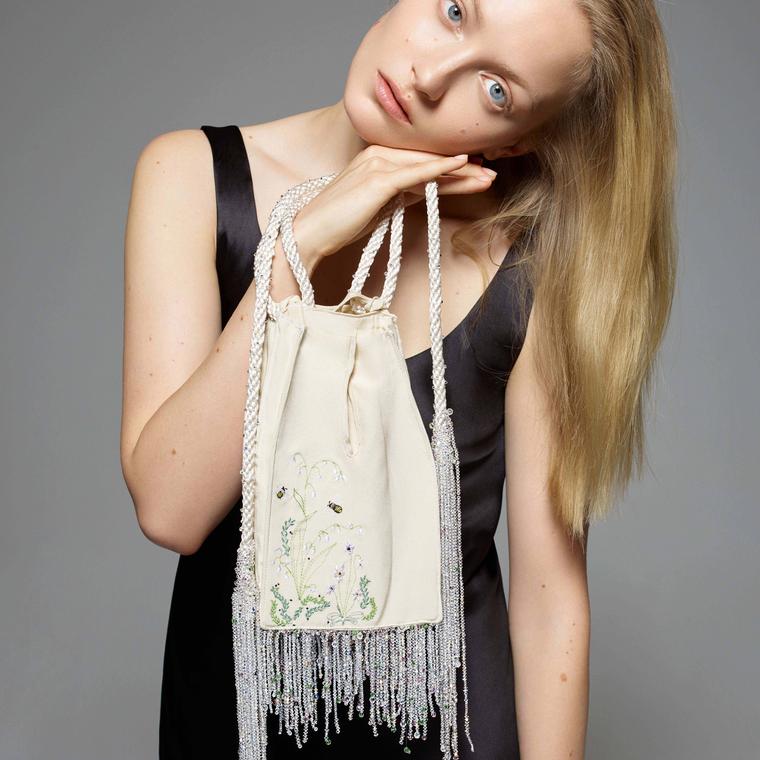
A recurrent theme in almost every design was Mr. Dior’s love of Nature and in particular gardens; both rambling English ones and the more formal French chatêau estates. As Mr. Dior himself sagely remarked: ‘You can never go wrong if you take Nature as an example.’ Leo Costelloe, formerly a florist, was naturally drawn to floral motifs. He delved into the history of hidden pockets worn hidden under gowns in the C17th and incorporated Maria Grazi Chiuri’s feminist views into his exquisitely embroidered and crystal fringed Pair of Pocket silk waist bag.
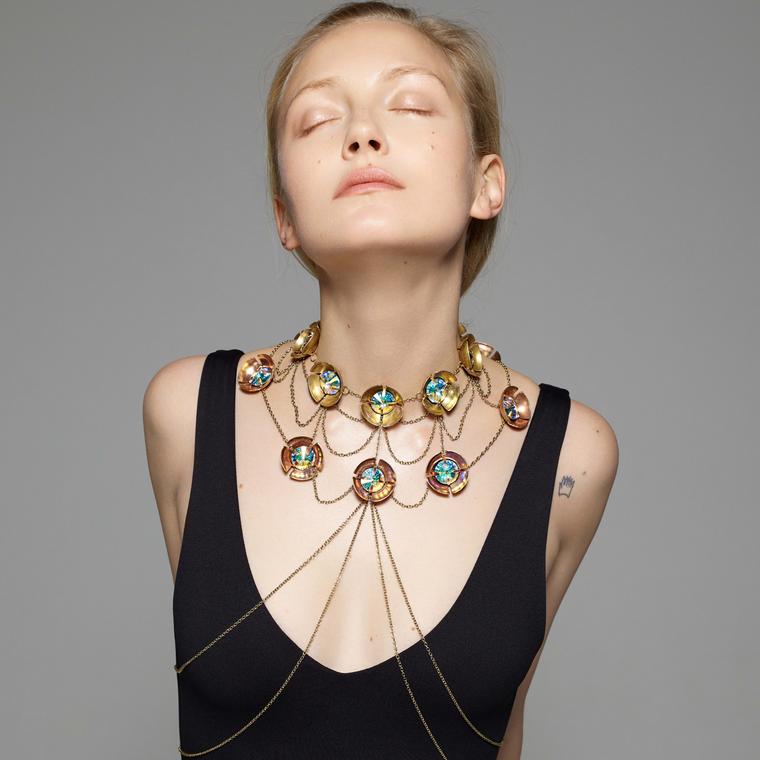
Bronia Kidd’s ‘Body Chain’ alludes to both as well as fetish wear as well as the patterns found in the well-trimmed French chateau gardens that Mr. Dior so admired. Another Nature-themed piece was Nicholas Willis’ ‘Celebration of Dior and Nature’ that fuses John Galliano’s exotic 1998 collection with Art Nouveau style in a bold plaque necklace using leaves and woven suede.
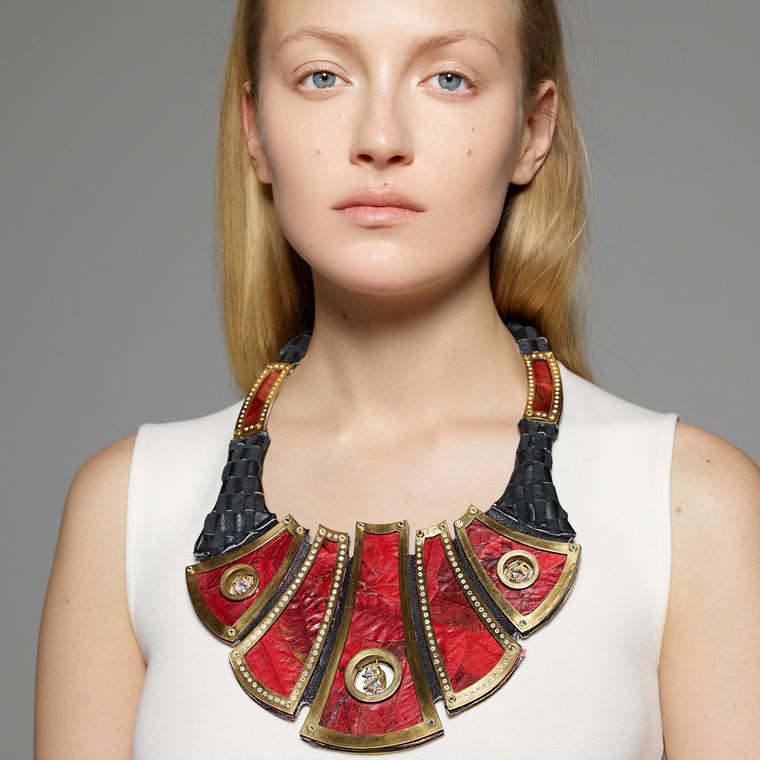
The distinctive silhouette of Mr. Dior’s Bar Suit with its nipped in waist and padded shoulders was another favourite motif as were chandeliers that light up the Dior universe. Evoking grandiosity and hedonism, the Ballroom piece by Qi Zhang is worn at the waist and opens to recreate the silhouette of Dior’s iconic Bar suit.
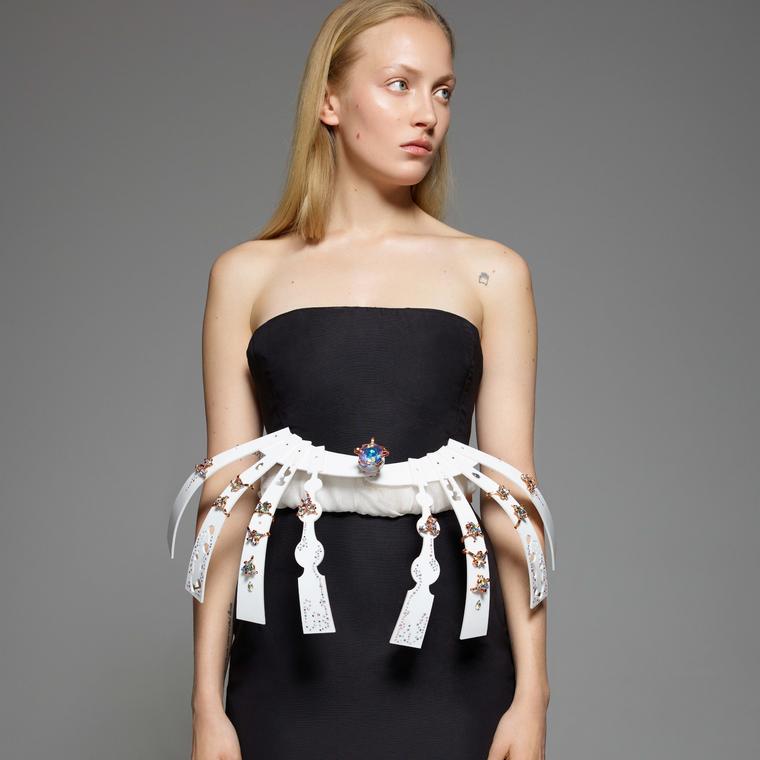
But inspiration came from diverse sources and not necessarily the finished gown but the dedication of the craftswomen and men in the dressmaking workshops. Hwajung Joo was so taken by Dior’s ateliers that she cleverly transformed the working elements used by the ‘petit mains’ into The White Volume belt. It is inspired by the toiles, or working models that are made of white fabric before embarking on the final piece in finer cloth.
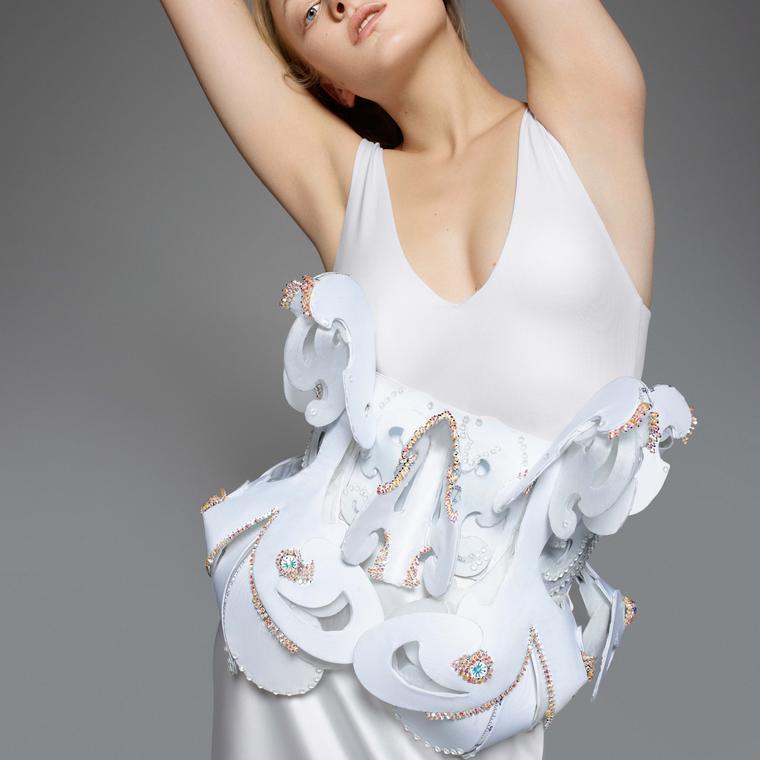
Turning the tables, Hwajung Joo picked on elements of the artisans’ craft such as pattern guides, measuring tapes and pins and elevated them to the status of couture. Also slipping in behind the scenes of Dior’s power house of creation, Clova Rae Smith’s brooches allude to the muted colour palette of the fabric swatches used in the atelier as well as Mr Dior’s love of flowers.
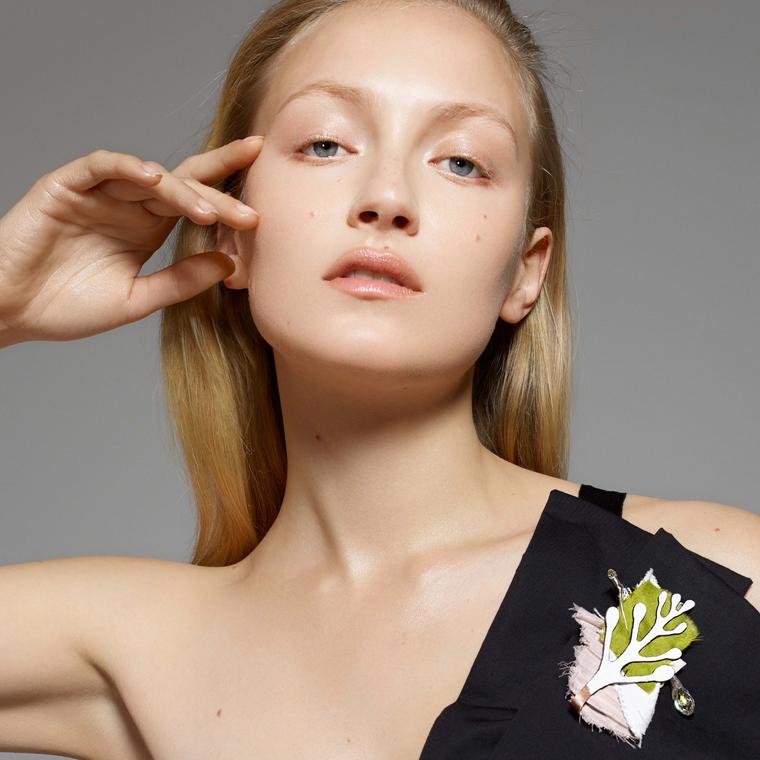
One of the most intriguing designs is Grace Liu’s Mystery of a Woman that fuses Geisha hairstyles with a handbag, worn on the head. The handbag made of crystal-encrusted damask opens to store a few small key possession. The large crystals on the end of chains on either side of the bag act as a balance.
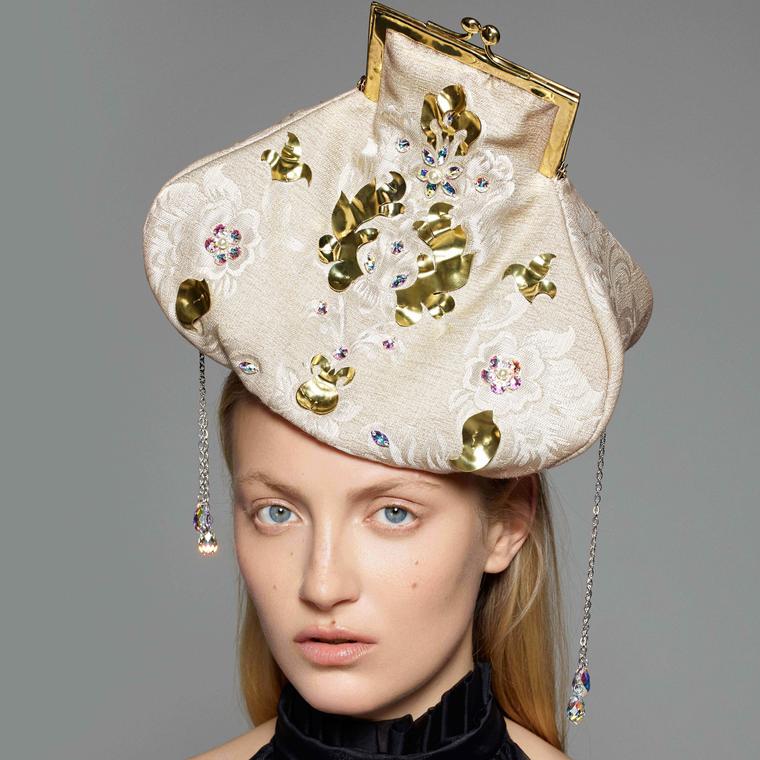
Toni Evans was another student who created a hat. Her's is called Crystal Rain and is inspired by the smoke-like chapeaus by Mr. Christian Dior as well as his beloved chandeliers. The umbrella shaped hat drips crystal rain that surrounds the body.
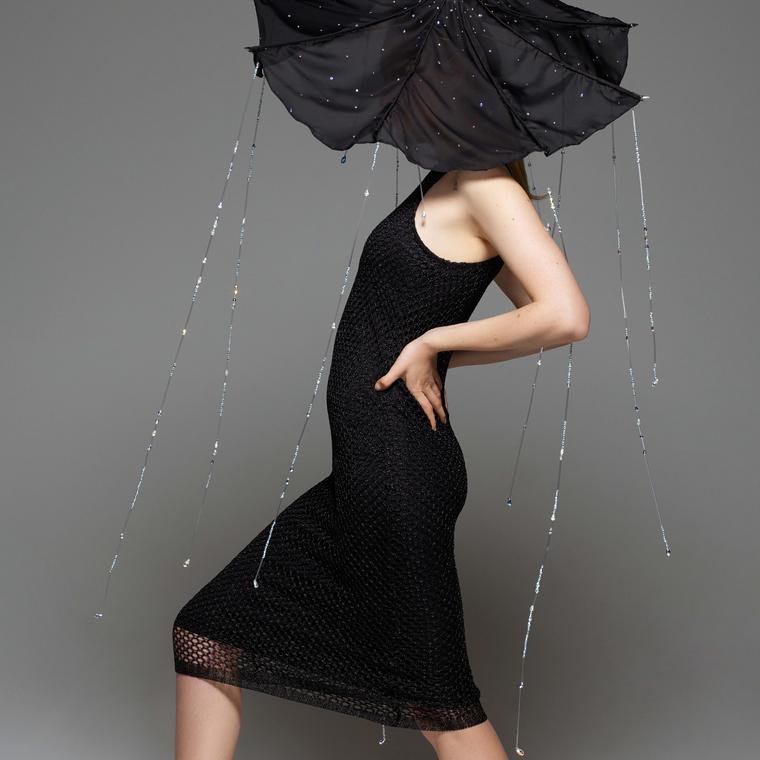
Even furniture played a role in sparking creativity. Mary Chan’s L’Ombre de Canage visor uses the emblematic ‘canage’ motif of the rattan garden chairs Mr Dior used as improvised seating for his guests at his early runway shows when budgets were tight. The Napoleon III era chairs were part of Mr Dior’s collection of Second Empire furniture and became a permanent fixture of the house of Dior. The chairs also had an unexpected consequence: after attending a Dior show, the fashionable ladies of Paris emerged with the cane pattern imprinted on their thighs and arms, immediately marking them as having come from a Dior show. Mary Chan echoes this by casting a canage pattern in shade over the face.
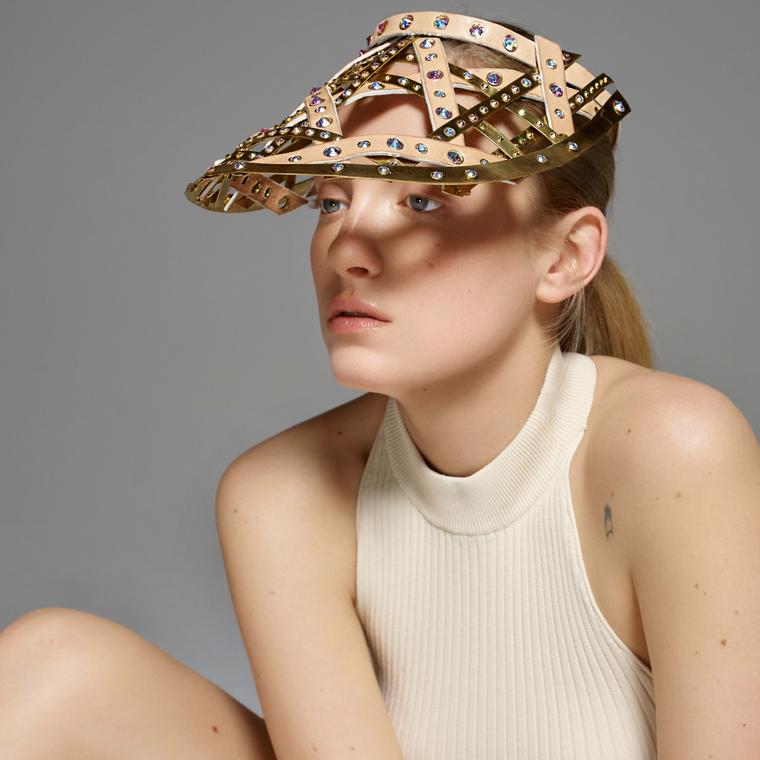
The £1000 prize went to the winner Piran Caseley for his Scent necklace based on the concept that perfume is an essential yet invisible part of a woman’s outfit. Simple yet effective, Piran Caseley captured the invisible with elegance and wit. ‘I was really interested in the idea that perfume can be so important in your appearance,’ said Piran Caseley at the prize giving, ‘but you can’t see it so I was trying to visualise perfume. The crystals are gathered and dispersed like the scent wafting and hangs around the neck in the air, so it is quite ethereal.
His design prompted Nadja Swarovski to comment: “Your inspiration for the piece was so thoughtful, beautiful and so logical. Why didn’t I think about that? Which is what one says about great design.” And these are all promising designers in the making who we will be watching over the next few years.


